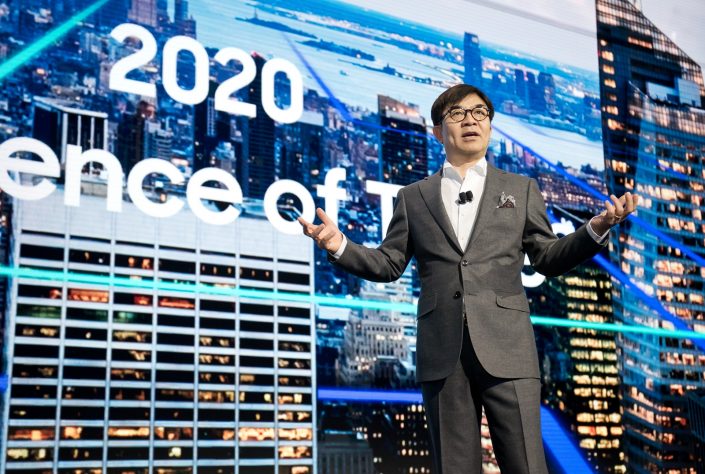CES 2018: Samsung Takes Control Of IoT Devices With SmartThings
The cloud-connected SmartThings app, on the way this spring, aims to give users a single point of control for all their connected gadgets
At CES on Monday Samsung launched Internet of Things (IoT) and automotive computing initiatives, pledging to use its prominent role in areas such as smartphones and consumer electronics to bring those diverse products together and make them more manageable.
At a press conference at Las Vegas’ Mandalay Bay hotel, the company said it would introduce a mobile application called SmartThings this spring that will combine existing IoT apps such as Samsung Connect, Smart Home and Smart View to give users a single point of control for all their connected devices.
SmartThings is to be available not only on Samsung smartphones, but also on connected TVs and the Ignite automotive cloud operated by its subsidiary Harman, meaning users will be able to control their home devices from their car as well as accessing car functions from home products.

Samsung said it also plans to build its Bixby voice assistant into smart TVs and Family Hub refrigerators this year, meaning users will be able to execute SmartThings control commands by speaking to those devices.
Cloud control
The televisions, refrigerators and other products are all to be linked to a platform called SmartThings Cloud, Samsung said.
The SmartThings platform is to be compatible with Samsung’s own products as well as some third-party devices, including the Ring doorbell and certain internet-connected cameras and thermostats.
The company has said it wants to make all its products IoT-ready and Bixby-capable by 2020. About 90 percent of its TVs, appliances, smartphones and tablets are online today.
Connected products including TVs, signage and appliances are protected with Samsung’s Knox security technology, the company said.
“At Samsung, we believe IoT should be as easy as flipping a switch,” stated Samsung co-chief executive HS Kim. “With the new products and services announced today, we’re making IoT easier and more seamless.”

In-car connectivity
Samsung demonstrated its in-car connectivity vision in the form of the Digital Cockpit, an automobile dashboard design that allows drivers to control the car’s electronics as well as connected devices at home through voice, touch, gesture and other triggers.
The company also announced several other automotive initiatives following on from its acquisition of Harman for $8 billion (£6bn) last year, including an open, modular platform for car connectivity called DRVLINE.
With the platform, which includes a broad range of components and software for in-car devices, Samsung said it aims to give manufacturers the flexibility to pick and choose the elements they need, rather than forcing them into an all-or-nothing deal.
At the centre of DRVLINE is an in-car compute system that Samsung said is a step toward autonomous vehicles, with another notable component being a new forward-facing camera system with functions including lane departure warning, forward collision warning, pedestrian detection and automatic emergency braking.
Samsung and Harman are also developing a 5G-capable telematics system that gives automobiles an always-on broadband internet connection and is another building block for autonomous cars.
What do you know about the history of mobile messaging? Find out with our quiz!